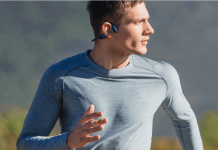For someone who puts on different hats throughout the day, a comfortable pair of running shoes is essential to get the job done. While shopping for running shoes is easy for most people, those with flat feet go through the challenge of finding the right one for them. If you happen to be one of these people, it is essential that you understand your foot’s anatomy to know what you need to make sure you get the most comfortable fit when shopping for a pair.
Running Shoes Buying Guide for People with Flat Feet
With the number of brands claiming to deliver the perfect fit and maximum comfort, it can be a challenge to distinguish the right pair for you. Let us go through the most important factors to consider when buying running shoes for you.
Understand Your Anatomy
People with flat feet may not have it in the same way. Some people have flexible flat feet while others have rigid. Those with flexible flat feet will have their arch visible when they do not apply weight; for instance, when they are sitting or lying down. However, it disappears when weight is placed on their legs. People who have this do not experience pain compared to those with rigid flat feet because they feel pain as they do activities within the day. Those with rigid flat feet do not have an arch visible anytime, affecting one or both feet.
Know the Need for Arch Support
It is understandable to hear people talk about arch support for people with flat feet because arch support plays a huge part in comfort. They usually do not know that for someone with arches that collapse from time to time, support is necessary to facilitate muscle strength with the goals of it being able to support itself. As for those with anatomically flat feet, too much arch support can cause more stress and affect their hips, knees, and range of motion.
Areas of Support
If you are shopping for running shoes for flat feet, it is important to know that arch support is not the only type of support you need. Since walking, especially running, leads to your feet applying more friction and force in your toe and heel areas, you must also check the shoes’ cushion and material to make sure they can accommodate the stress while remaining durable. This is why running shoes for people with flat feet is usually thicker and bulkier than that of a regular one.
Mind the Last
When we talk about your shoes’ last, we are referring to your shoes’ mold. This makes the shape of your shoe which also has a lot to do with your feet’s ability to move freely. There are three different types of lasts, straight, curved, and semi-curved. The choice to go for would be a last that is straight, and this is because it accommodates the structure of a flat foot when placed with weight. While hourglass-shaped shoes look good on the outside, a person with a flat foot wearing them will most likely feel uncomfortable, restricted, and eventually in pain. This will be since the surface they will be stepping on is uneven.
Feel the Fit
Once you determine the type of foot you have and its anatomical structure, you can now go ahead and choose among different types of running shoes. As you point out the specifics of your desired pair, it is important that you try them on to see the actual fit. Different designs seem to look comfortable; you will not know if it is the right fit unless you try it on. Consider the adjustments that are to happen after breaking it in too. It will be convenient if you get your shoes from a store with a guarantee or return policy if the shoes do not turn out to be that convenient.
Conclusion
Finding the right running shoes may not be a big deal to some, but those with flat feet can attest that the quality and kind of their shoes can affect their daily living. If you feel that you are among these people, you can be sure that you are to get the right one the next time you go shopping for running shoes. Always remember that comfort and fit should be your top priority.





























